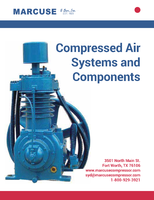Diesel-electric Propulsion Systems for Biggest Shipyard in Taiwan Reduce Fuel Costs
Share:
• Enhanced maneuverability when navigating at low speeds
• Economic, energy-saving vessel operation with Integrated Drive Systems (IDS) comprising low-voltage motors and frequency converters
• Effective control and disposal of pollutants contribute to marine environmental protection
CSBC Corporation Taiwan has chosen Siemens to supply diesel-electric propulsion systems and other accessories for four 65,000-ton semi-submersible deck cargo vessels (SSDCVs). The country’s largest shipyard is building the vessels for a customer in Singapore. Compared to conventional mechanical propulsion technologies, Siemens’ diesel-electric system will reduce fuel costs by up to 15 percent, resulting from unique power management features. Likewise, associated propellers, rudders and thrusters will improve the vessel’s maneuverability when operating at low speeds. Each propulsion system includes an IDS comprising low-voltage propulsion motors and frequency converters that facilitate economic, energy-saving vessel operation, as the components are perfectly matched to one another. In order to protect the ocean from unnecessary pollution ballast pump systems will help effectively control and dispose of pollutants.
“Our state-of-the-art diesel-electric propulsion systems are designed to enhance the fuel efficiency and maneuverability of marine vessels, while leveraging an associated pumping technology to protect the surrounding environment,” says Mario Azar, CEO of the Siemens Business Unit Oil Gas and Marine. “We are pleased to be working closely with CSBC Corporation Taiwan on this important project, and with the overall adoption of our propulsion system in the oil gas and marine industries we serve.”
Siemens will supply the complete diesel-electric propulsion systems for all four SSDCVs, to be delivered by the end of 2017. Each system, consisting of four 4,000 kilowatt (kW) low-voltage Simotics motors and four low-voltage Sinamics frequency converters as well as their corresponding transformers, creates an IDS. Due to optimum coordination of components, a cost-effective overall system has been developed that is distinguished by reliable operation and high availability. The scope of supply for each vessel also includes 6,980 kW main generators, medium-voltage switchboards, power management systems, converters and transformers for ballast pump as well as distribution transformers, a controllable pitch propeller, flap rudder and a bow and stern tunnel thruster.
SSDCVs are designed for transportation of heavy loads, such as other vessels, jack-up rigs, floating and non-floating modules. They can be submerged, enabling cargo to be floated into place without moving it out of the water. Alternatively, they can be loaded without activating the submerge feature. The need for this type of vessel is expected to grow in the coming years.
For further information on naval and commercial vessels, please see www.siemens.com/marine
Siemens AG (Berlin and Munich) is a global technology powerhouse that has stood for engineering excellence, innovation, quality, reliability and internationality for more than 165 years. The company is active in more than 200 countries, focusing on the areas of electrification, automation and digitalization. One of the world’s largest producers of energy-efficient, resource-saving technologies, Siemens is No. 1 in offshore wind turbine construction, a leading supplier of combined cycle turbines for power generation, a major provider of power transmission solutions and a pioneer in infrastructure solutions as well as automation, drive and software solutions for industry. The company is also a leading provider of medical imaging equipment – such as computed tomography and magnetic resonance imaging systems – and a leader in laboratory diagnostics as well as clinical IT. In fiscal 2014, which ended on September 30, 2014, Siemens generated revenue from continuing operations of €71.9 billion and net income of €5.5 billion. At the end of September 2014, the company had around 343,000 employees worldwide on a continuing basis. Further information is available on the Internet at www.siemens.com.
Contact for journalists:
Ines Giovannini
Phone: +49 911 895-7946; E-mail: ines.giovannini@siemens.com
Siemens AG
Communications and Government Affairs
Head: Stephan Heimbach
Wittelsbacherplatz 2
80333 Munich
Germany




